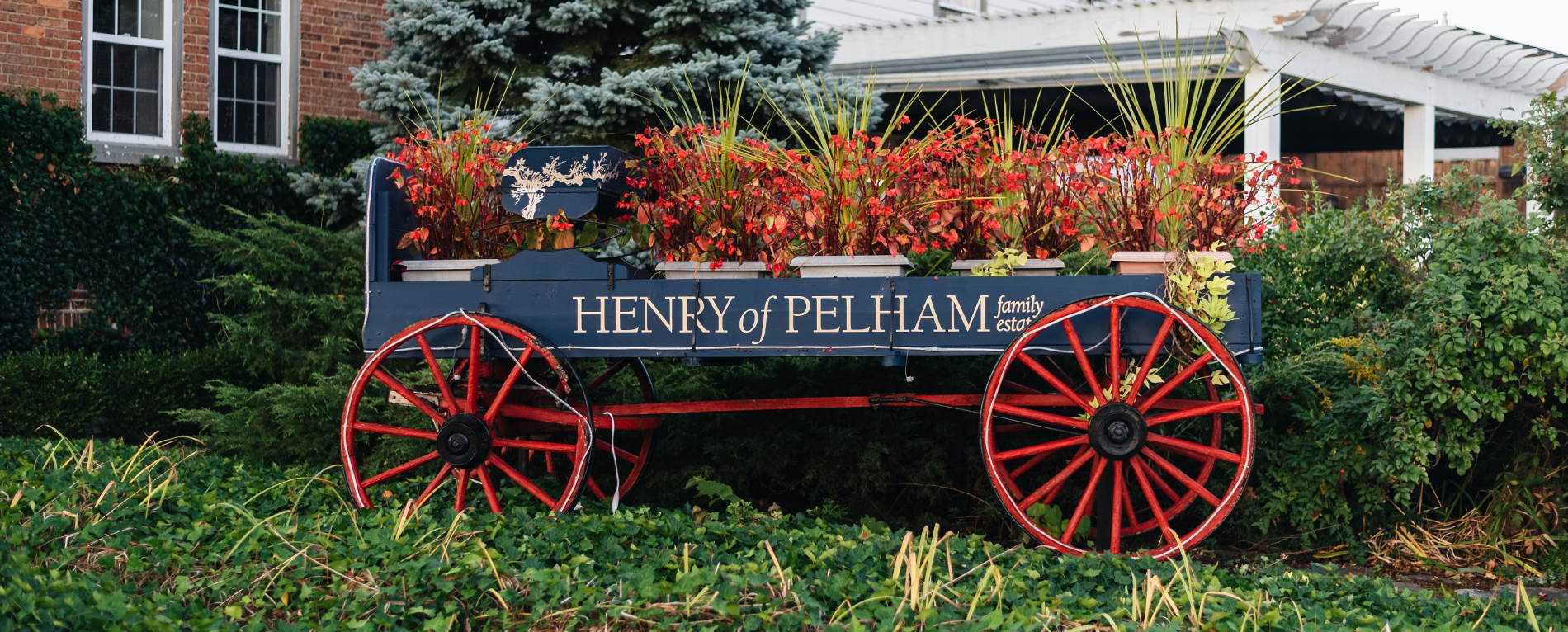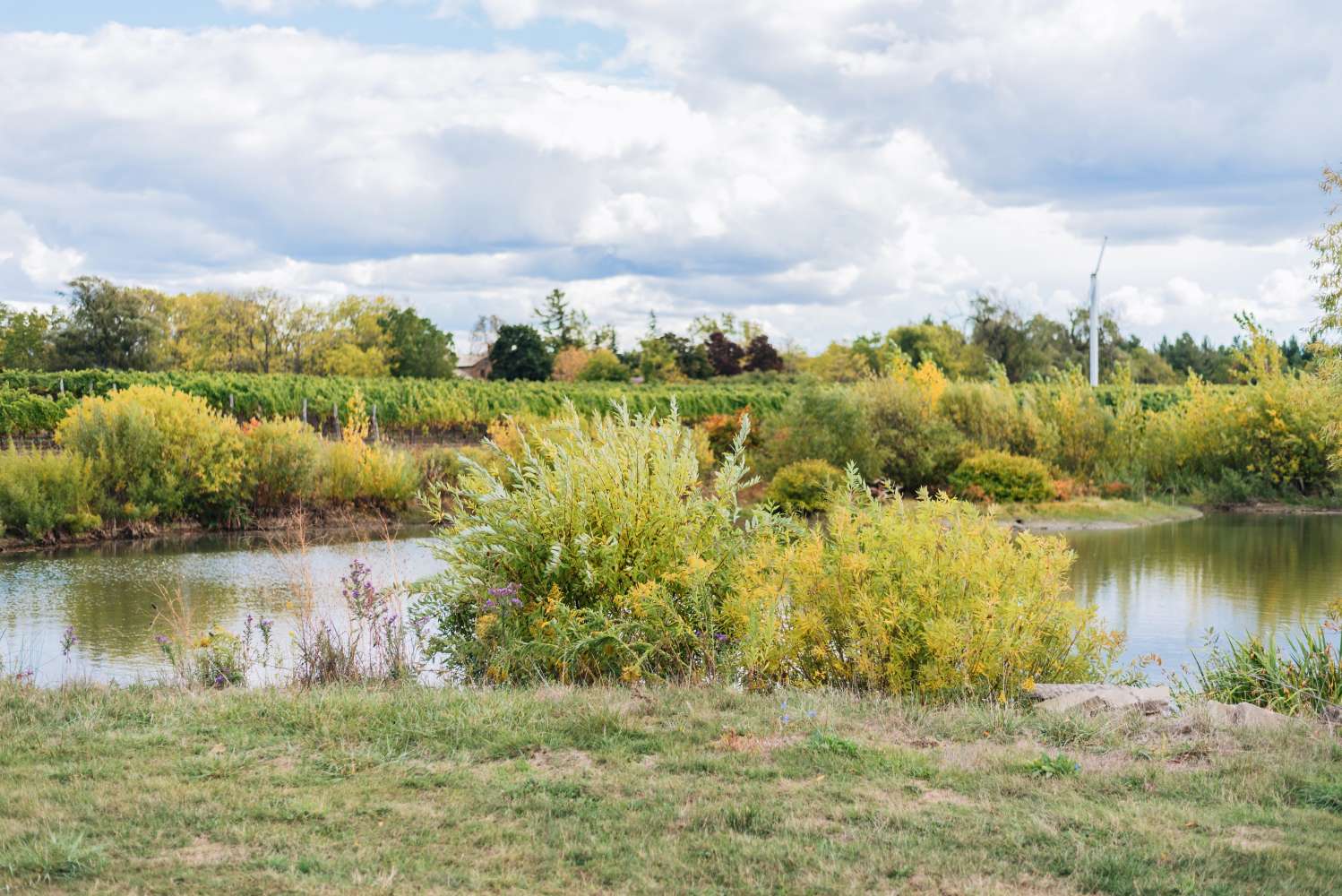Henry of Pelham – Wetland Restoration & Bio-filters and Woodland Preservation
Company Summary
Henry of Pelham is an estate winery, owned and operated by the Speck family since 1982 (6th generation on the land). We are strong believers in the importance of sustainability from soil to shelf. Henry of Pelham is proud to be one of the first wineries in Ontario to have had both our winery and vineyards certified by Sustainable Winemaking Ontario

Executive Summary
Wetland restoration and bio-filters
The bulk of the land at the winery is the catchment area for a much larger watershed. To help with excess water and prevent soil erosion, the entire vineyard is under-drained. This provides a unique opportunity to improve the quality of groundwater that both enters and leaves the property. By adding bio-filters to the ponds, the water that leaves the property is cleaner than when it came in.
Woodland preservation
Part of the land has been reforested over time. By leaving these stands of trees we have preserved more than 11% of our total acreage as forest. Combined with the many acres of wetlands on the property, we have been able to create very well-traveled wildlife corridors that run between our forests and the Short Hills Provincial Park. We also make it a practice to leave dead trees standing for raptors to perch, a side benefit being that the hawks scare off grape-eating birds which are a pest at harvest.
From wetland restoration and biofiltration to reforestation and water conservation, our efforts will ensure that plants, helpful insects, animals and people—including winemakers—continue to thrive on this land another six generations from now!
Sustainable Target
Wetland restoration and Bio-filters
- Improve the quality of groundwater that both enters and leaves the Henry of Pelham winery property through the implementation of bio-filters
- Create cleaner water leaving the property and entering the Great Lakes
- Measurably ensure that all water used in the production facilities is purified after its use
Woodland Preservation
- Through reforestation and acres of wetland available, well- travelled corridors for wildlife have been created
- Maintain woodland preservation via natural resources available for raptors to perch, therefore reducing the amount of grape-eating birds during harvest season
Start to End Date:
2006 – 2023 (next phase)
Partners:
Niagara Peninsula Conservation Authority
Reason Why/Motivation/Background
To ultimately help with excess water and prevent soil erosion. Bio-filters are easy to install, as the winery already has the underdrainage to catch the water.
The natural preservation of the woodland initiative was a smart, easy and efficient way to help reduce the amount of pests affecting a successful harvest season.
Project Description:
Wetland restoration and bio-filters Initiative
While this initiative required a bit of work on the headlands, the Niagara Peninsula Conservation Authorities helped with the overall implementation strategy.
Woodland preservation
The woodland preservation initiative works in concert with the wetland restoration initiative, thus creating wildlife corridors, and raptor perches/minimizing wildlife in opposition and ultimately producing healthier crops.
Benefits & Achievements:
Water leaves the property cleaner than it enters the property.
Through natural woodland preservation, there is less animal/bird pressure on the crops.
Lessons Learned:
It is negligibly more expensive to invest in these projects than not to do them, yet these initiatives have a huge impact on reducing our water and carbon footprint.
Next Steps
To look at ways of evolving these current initiatives based on best practices learned to date and investing in similar initiatives that will benefit the winery, vineyards and the environment. Also encouraging our neighbours/growers to adopt similar practices.
Potential for Replication:
Depends on the property and location as each locale needs a tailored approach.
In general, viticulture in Niagara/Ontario lends itself to these practices.


